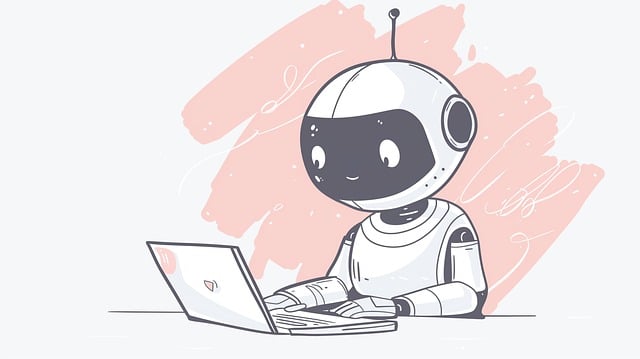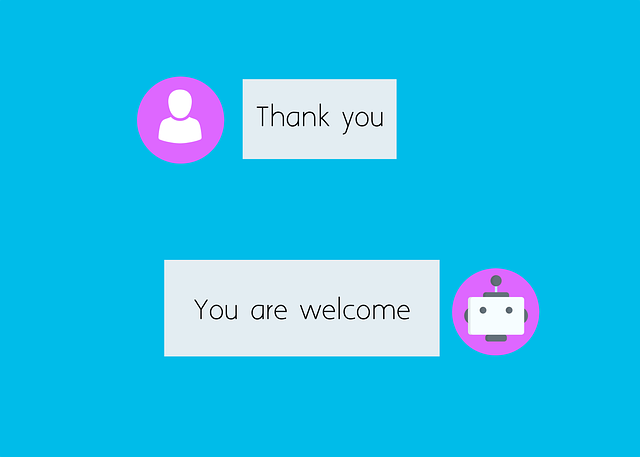Chatbot AI, powered by NLP and machine learning, transforms customer interactions by offering adaptable, personalized experiences. Key strategies for designing effective chatbot AI include prioritizing user experience with well-structured conversations, visual interaction flows, and consistent engagement. Development platforms like Dialogflow and Rasa, along with programming languages like Python, streamline creation. Rigorous testing and ongoing optimization based on analytics ensure top-notch performance and user satisfaction.
Building a chatbot has become an accessible and powerful way to enhance customer service and engagement. This comprehensive guide takes you on a journey through the creation of your own chatbot AI. From understanding the fundamentals of chatbot technology, we’ll demystify its potential. We then explore design strategies for user-centric experiences, followed by insights into development tools and programming languages. Learn about deployment best practices and continuous optimization techniques to ensure your chatbot excels in the digital landscape.
- Understanding Chatbot AI: Defining and Demystifying the Technology
- Designing Your Chatbot: User Experience and Interaction Flows
- Development Process: Tools, Platforms, and Programming Languages
- Deployment and Optimization: Testing, Training, and Continuous Improvement
Understanding Chatbot AI: Defining and Demystifying the Technology

Chatbots, driven by AI technology, have transformed how businesses interact with customers, streamlining processes and enhancing user experiences. At its core, chatbot AI involves training a computer program to simulate human conversation using natural language processing (NLP) and machine learning algorithms. These technologies empower chatbots to understand user queries, interpret intent, and generate contextually relevant responses.
Defining chatbot AI is crucial for demystifying its capabilities and limitations. Unlike traditional rule-based systems that follow pre-set scripts, AI-powered chatbots learn from vast datasets, allowing them to adapt to new information and improve over time. This adaptability enables chatbots to handle a wide range of customer inquiries, from answering frequently asked questions to performing complex tasks like booking appointments or providing personalized recommendations.
Designing Your Chatbot: User Experience and Interaction Flows

When designing your chatbot, user experience (UX) should be the cornerstone of your strategy. Consider the interactions users will have with your chatbot AI and craft an intuitive, seamless flow that meets their needs. Think about the conversational path from initial greetings to resolving queries or tasks. Organize information logically and use clear, simple language for easy understanding. Incorporate options and branching conversations to allow users to navigate effectively. A well-designed UX ensures users find value in interacting with your chatbot AI, fostering engagement and satisfaction.
Visualize interaction flows as a series of steps where each response should lead naturally to the next. Map out different user intents and the corresponding actions your chatbot will take. This process helps identify potential hurdles or confusing moments in the conversation flow. Aim for a smooth, logical progression that feels natural, even if complex information is being exchanged. Consistent tone, prompt feedback, and clear calls-to-action contribute to a positive UX, encouraging users to return and interact with your chatbot AI repeatedly.
Development Process: Tools, Platforms, and Programming Languages

The development process of a chatbot AI involves careful selection of tools, platforms, and programming languages to ensure its effectiveness and efficiency. Start by choosing a suitable platform that offers pre-built chatbot frameworks and templates, which can save significant time and effort during the initial setup. Popular options include Dialogflow (by Google), IBM Watson Assistant, Microsoft Bot Framework, and Rasa, each providing unique features like natural language understanding (NLU) capabilities, integration with third-party services, and customization options.
In terms of programming languages, Python is widely regarded as a top choice for chatbot development due to its simplicity, extensive libraries (like NLTK and TensorFlow), and strong community support. Other languages like JavaScript (with Node.js) and Java are also viable depending on specific project requirements and the desired level of customization. These tools and languages collectively enable developers to create sophisticated chatbots that can handle complex conversations, learn from user interactions, and continuously improve their performance over time.
Deployment and Optimization: Testing, Training, and Continuous Improvement

After building your chatbot AI, deployment is a crucial step in bringing it to life and making it accessible to users. Once integrated into relevant platforms or websites, thorough testing is essential. This involves putting the chatbot through various scenarios and user interactions to identify and rectify any bugs or issues. A well-tested chatbot ensures a seamless user experience, which is vital for maintaining user satisfaction and engagement.
Continuous optimization is an ongoing process that enhances the chatbot’s performance over time. Training involves feeding the AI with diverse datasets and feedback from real users to improve its understanding and response accuracy. Regular updates and adjustments based on analytics and user feedback can significantly refine the chatbot’s capabilities, making it more effective in handling queries and providing valuable assistance.
Building a chatbot isn’t just about creating a talking bot; it’s about crafting an engaging chatbot AI experience. By understanding the fundamentals of AI technology, designing user-centric interactions, and leveraging the right development tools, you can create intelligent assistants that deliver value and enhance user experiences. Through rigorous testing, ongoing training, and continuous optimization, your chatbot will evolve to better understand and assist users, ensuring a dynamic and ever-improving chatbot ai journey.
